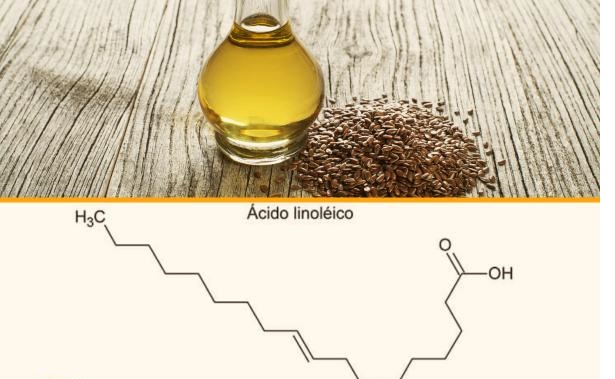Linoleic acid is an essential nutrient with many known beneficial properties, most of which are still under study. It is found naturally in certain foods, mainly of plant origin, and can also be found in the form of food supplements, especially if we talk about conjugated linoleic acid (CLA).

For the proper functioning of the body, this acid must not be lacking in the appropriate amounts and within a varied and balanced diet, but if you are not clear about what linoleic acid is and what it is for, we clarify your doubts and tell you what is known, so far, of its characteristics and possible good effects.
What is linoleic acid
In the set of healthy fats, those that the body requires in the appropriate amounts, linoleic acid stands out, because it is the main polyunsaturated acid of the Omega 6 group. Chemically a double bond acid, which is considered essential because our body cannot synthesize it, that is, we can only obtain it through the intake of foods that contain it, mainly seeds from which vegetable oils are extracted.
What is conjugated linoleic acid
For its part, conjugated linoleic acid, called CLA for its acronym in English (Conjugated Linoleic Acid), is similar to linoleic acid itself but chemically different. In the case of CLA, although it can be found in some vegetables in minimal quantities, its presence is mainly in milk and meat from ruminant animals. Unlike linoleic acid, conjugated linoleic acid is produced in the body of some animals (including humans) by the action of the gastrointestinal bacterial flora. In this sense, ruminant mammals, mainly sheep, cows and goats, are the ones that concentrate the highest amounts of CLA in their milk, meat and fat.
The possible benefits of this acid have made it present in numerous dietary supplements, especially those whose objective is muscle development and weight loss. In fact, the possibility of including it as a functional food is under study.
What is linoleic acid for?
As we have indicated, both linoleic acid and CLA belong to the group of fat macronutrients and, therefore, together with carbohydrates, are one of the main sources from which the body obtains the energy it needs to carry out all its functions.
In addition to the energy intake, it is estimated that the inclusion in the diet of the necessary amounts of linoleic acid is useful for:
- Improve cardiovascular health: as with other Omega 6 and Omega 3 acids, it is considered that the foods that contain them favor the correct absorption of lipids, helping to maintain adequate levels of cholesterol and triglycerides in the blood, also contributing to lower blood pressure. Recent studies suggest that linoleic acid could play a protective role, reducing the risk of ventricular fibrillation.
- Reduce the presence of body fat: in this sense, it should be clarified that linoleic acid, as part of a balanced diet, could help normal fat metabolism, helping to maintain a healthy weight. Regarding the effectiveness of CLA as a key element in slimming diets, numerous investigations are currently being carried out, which are still inconclusive. On the one hand, a study published in the journal Nutrients indicates that CLA could promote weight loss, according to tests carried out with mice, but other research carried out by Spanish scientists and published in Frontiers in Bioscience warns of the risks that some of the structures of conjugated linoleic acid in weight loss diets could entail, especially for the functioning and health of the liver.
- Other benefits: although research continues, it is believed that linoleic acid could also have beneficial effects when it comes to improving the immune system, given its powerful antioxidant action, which protects cell structure. In addition, its possible antidiabetic action is studied when it comes to improving the control of blood sugar levels, and its ability to contribute to visual health care is even analyzed.
Foods with linoleic acid
Obtaining the necessary amount of linoleic acid, which the body requires, without the need for supplements, is simple by not leaving out of the diet those foods that include it in its composition in higher percentages. In general, those of plant origin, especially seeds, vegetable oils and to a lesser extent some nuts are the foods richest in linoleic acid. Soybean, sunflower, corn, walnut, cashew and chia seed oils are excellent sources of this Omega 6 acid.
As for the foods that involve the natural intake of CLA, we must highlight sheep's milk (the one that contains the most), cow's and goat's milk, as well as dairy products, especially cheeses and also butters, margarines and yogurts (many of them enriched with this acid). In the same way, conjugated linoleic acid is also present in the different pieces of meat that are obtained from these cattle, which, consumed in the right measure, are beneficial due to their richness in nutrients.
If you want to know more foods with linoleic acid and CLA, as well as with other acids that are included in Omega 6, we recommend you read this other article about Foods rich in omega 6.




